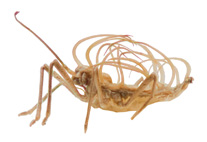Abstract
As authors of the study demonstrating the non-monophyly of the genus previously called Cyclocheilichthys (Pasco-Viel et al. 2012), which included nine species, we acknowledge Kottelat’s (2013: this issue) conclusions with regard to the generic names for the species we investigated:
cu� o������g pincer-shaped suckers, is described for the first time using scanning electron microscopy. In scolex morphology, M. ficta closely resembles phyllobothriidean cestodes, parasites of elasmobranchs. However, this similarity does not reflect phylogenetic relatedness of these cestodes but instead presents an example of convergent morphological evolution of attachment organs of unrelated groups of cestodes that parasitize different groups of vertebrates. Besides scolex morphology, the genus is characterised by the possession of a very large cirrus-sac, which may reach up to the midline of proglottides, few testes (less than 60), vitelline follicles limited to the dorsal side of proglottides, a large vaginal sphincter, and eggs with a three-layered embryophore covered with rounded projections. Numerous errors in the diagnosis of M. ficta, which appeared in the literature as a result of uncritical compilation of data without examination of original material, are corrected. Multilocus phylogenetic analysis of nuclear ribosomal RNA genes ssr- and lsrDNA and mitochondrial genes rrnL and cox1 place this species among other snake-parasitizing proteocephalideans of the genus Ophiotaenia. The convergent evolution of scolex morphology across distantly related taxa is discussed.

